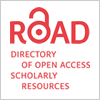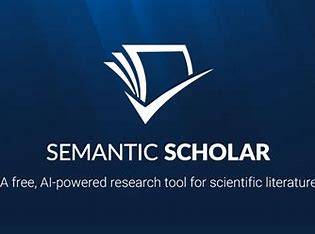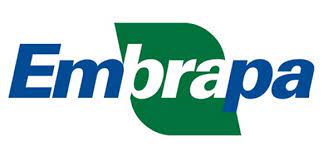THE USE OF TECHNOLOGY IN DISTANCE EDUCATION
DOI:
https://doi.org/10.47820/recima21.v4i8.3828Keywords:
work investigated the use of technology in distance educationAbstract
This work investigated the use of technology in distance education, a topic of increasing importance due to the rapid advance of digital technologies and the increase in online teaching. The evolution of distance education and the integration of different technologies in learning were analyzed, from learning management platforms to online collaboration tools and mobile technologies. The benefits and challenges of technology-mediated distance education were also discussed, highlighting the importance of issues such as accessibility, interaction and learner support. The literature analysis showed that the effective use of technology in distance education requires a combination of adequate pedagogical strategies, effective technologies and adequate support for students and teachers. In addition, the paper suggested recommendations for future research, including the need to investigate student perceptions of distance learning, the effectiveness of different technologies, teacher training, and the long-term impact of distance education on learning outcomes. from the students.
Downloads
References
ALLEN, I. E.; SEAMAN, J. Digital Learning Compass: Distance Education Enrollment Report 2017.
BATES, A. W. Ensino em uma era digital: diretrizes para o design de ensino e aprendizagem. Vancouver, BC: Tony Bates Associates Ltd, 2015.
BECKER, S.; KUNZE, C.; VANCEA, M. Energia comunitária e empreendedorismo social: abordando propósito, organização e incorporação de projetos de energia renovável. Journal of Cleaner Production, v. 147, p. 25–36, 2017.
BOFF, L. Sustentabilidade: o que é - o que não é. 2. ed. Petrópolis, RJ: Vozes, 2013. p. 107.
BOOTH, A.; PAPAIOANNOU, D.; SUTTON, A. Abordagens sistemáticas para uma revisão de literatura bem-sucedida. Sage Publications, 2012.
BOWER, M. Teoria de aprendizagem mediada por tecnologia. In: Aprendizagem aprimorada por tecnologia no ensino superior. IGI Global, 2019.
BRAUN, V.; CLARKE, V. Usando análise temática em psicologia. Qualitative Research in Psychology, 3(2), 77-101, 2006.
BURGSTAHLER, S.; CORY, R. Design universal no ensino superior: dos princípios à prática. Harvard Education Press, 2015.
FERREIRA, L. C. S. Sustentabilidade: uma abordagem histórica da sustentabilidade. In: Encontros e Caminhos: Formação de Educadoras(es) Ambientais e Coletivos Educadores. Ministério do Meio Ambiente, Brasil, 2005. Disponível em: https://www.aedb.br/seget/arquivos/artigos10/31_cons%20teor%20bacha.pdf. Acesso em: 14 nov. 2020.
FINK, A. Como fazer uma revisão bibliográfica: Avaliação de literatura e inspeção de documentos em pesquisa de ciências sociais, saúde e humanas. Sage Publications, 2013.
GARRISON, D. R. E-learning no século 21: um quadro para pesquisa e prática. Taylor & Francis, 2011.
GAUTAM, C. Top 20 LMS Software Based on User Experience—2020. Elearning Industry.
HARRIS, D.; JONES, M. Integração acadêmica e social no ensino superior: uma pesquisa de satisfação e insatisfação dentro de um grupo de estudos de educação no primeiro ano em uma nova universidade. Journal of Further and Higher Education, 2010.
HARTNETT, M.; ST. GEORGE, A.; DRON, J. Explorando a motivação em um contexto online: um estudo de caso. Contemporary Issues in Technology and Teacher Education, 14(1), 31-53, 2014.
HODGES, C. et al. A diferença entre o ensino remoto emergencial e o ensino online. Educause Review, 27, 2020.
HOLMBERG, B. A evolução, princípios e práticas da educação a distância. Bibliotheks- und Informationssystem der Universität Oldenburg, 2005.
IPIRANGA, A. S. R.; GODOY, A. S. Relatório Brundtland. RAM, Rev. Adm. Mackenzie (Online), São Paulo, v. 12, n. 3, jun. 2011. Disponível em: https://www.scielo.br/scielo.php?script=sci_arttext&pid=S1678-69712011000300002&lng=pt&tlng=pt. Acesso em: 14 nov. 2020.
JOHNSON, L. et al. NMC Horizon Report: 2016 Higher Education Edition. Austin, Texas: The New Media Consortium, 2016.
KEENAN, S. Aprendizagem online: trata-se de tempo, tarefas, conexões e aprendizagem independente. European Journal of Open, Distance and E-Learning, 2013.
LOWENTHAL, P.; SNELSON, C.; PERKINS, R. Ensinando MOOCs massivos, abertos, online (MOOCs): histórias da linha de frente. International Review of Research in Open and Distributed Learning, 19(3), 2018.
MAYER, R. E. O Manual de Cambridge de aprendizagem multimídia. Cambridge University Press, 2014.
MOORE, M. G. et al. E-Learning, aprendizagem online e ambientes de aprendizagem a distância: são a mesma coisa? Internet and Higher Education, 14(2), 129-135, 2011.
MOORE, M. G. Manual de educação a distância. Routledge, 2013.
MOORE, M.; KEARSLEY, G. Educação a distância: uma visão sistêmica do ensino online. Cengage Learning, 2012.
RADU, I. Por que meus alunos deveriam usar RA? Uma revisão comparativa dos impactos educacionais da realidade aumentada. In: Anais do Simpósio Internacional IEEE sobre Realidade Mista e Aumentada, 2014.
ROBERTS, K.; PARK, H. J.; BROWN, S.; COOK, B. Design universal para instrução no ensino pós-secundário: Uma revisão sistemática de artigos baseados empiricamente. Journal of Postsecondary Education and Disability, v.24, n.1, p. 5-15, 2011.
ROCHA, Thelma; GOLDSCHMIDT, ANDREA (Coords). Gestão dos Stakeholders: como gerenciar o relacionamento e a comunicação entre as empresas e seus públicos de interesse. São Paulo: Saraiva, 2010.
SANTOS, F. M. Uma teoria positiva do empreendedorismo social. Journal of Business Ethics, v. 111, p. 335–351,2012.
SELWYN, N. Desconfiando da tecnologia educacional: Questões críticas para tempos de mudança. Routledge, 2014.
SELWYN, N. Educação e tecnologia: Questões e debates-chave. Bloomsbury Publishing, 2016.
SIEMENS, G.; LONG, P. Penetrando a névoa: Análises em aprendizado e educação. EDUCAUSE Review, v. 46, n.5, p. 31, 2011.
SIMONSON, M.; SMALDINO, S.; ALBRIGHT, M.; ZVACEK, S. Ensino e aprendizagem a distância: Fundamentos da educação a distância. Information Age Publishing, Inc, 2014.
SUN, P.C.; TSAI, R.J.; FINGER, G.; CHEN, Y.Y.; YEH, D. O que impulsiona um e-Learning de sucesso? Uma investigação empírica dos fatores críticos que influenciam a satisfação do aluno. Computers & Education, 2008.
TRUST, T.; WHALEN, J. Os professores devem ser treinados em ensino remoto de emergência? Lições aprendidas da pandemia COVID-19. Journal of Technology and Teacher Education, v. 28, n.2, p. 189-199, 2020.
VELETSIANOS, G. Práticas abertas e identidade: Evidências da participação de pesquisadores e educadores nas redes sociais. British Journal of Educational Technology, v. 44, n.3, E258-E261, 2013.
WALKER, D. J.; BROOKS, D. C. Um estudo das características de aprendizagem adaptativa em material didático de graduação. In: Anais do Simpósio Técnico ACM SIGCSE de Educação em Ciência da Computação, 2016.
YU, T.; RICHARDSON, J.C. Uma análise fatorial exploratória e análise de confiabilidade do instrumento de prontidão do aluno para aprendizado online (SOLR). Online Learning, 2015.
ZAWACKI-RICHTER, O.; NAIDU, S. Mapeando tendências de pesquisa a partir de 35 anos de publicações em Educação a Distância. Distance Education, v.37, n.3, p. 245-269, 2016.
Downloads
Published
How to Cite
License
Copyright (c) 2023 RECIMA21 - Revista Científica Multidisciplinar - ISSN 2675-6218

This work is licensed under a Creative Commons Attribution 4.0 International License.
Os direitos autorais dos artigos/resenhas/TCCs publicados pertecem à revista RECIMA21, e seguem o padrão Creative Commons (CC BY 4.0), permitindo a cópia ou reprodução, desde que cite a fonte e respeite os direitos dos autores e contenham menção aos mesmos nos créditos. Toda e qualquer obra publicada na revista, seu conteúdo é de responsabilidade dos autores, cabendo a RECIMA21 apenas ser o veículo de divulgação, seguindo os padrões nacionais e internacionais de publicação.

 Clique para ver detalhes
Clique para ver detalhes 











